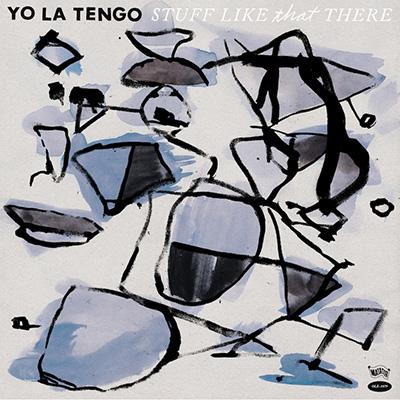“Yo La Tengo” translates to “I have it.” But what is it they have? One thing this band has is a track record of putting out good music for a long time—longer than most of us have been alive, in fact.
The band formed in 1984 in Hoboken, New Jersey, although they’ve only had their current lineup since 1992. They’ve released 14 studio albums as of this year. They produce records, they tour, they have a good time. Nothing to it, right?
Yo La Tengo’s sound is and has always been varied. The band has an enormous discography; since their formation, YLT have been critically successful for the most part, though they have never found a firm foothold in the mainstream market.
Ira Kaplan and Georgia Hubler, the heart and soul of YLT, have had other missions in mind.
In 1990 the band released “Fakebook,” an album of stripped-down, acoustic-oriented cover songs. Since then YLT has interspersed covers throughout their albums, but “Stuff Like That There” is the first album completely filled with covers since that early release.
The band is known for playing all-request gigs; it’s a chance to show off their depth of pop-music knowledge, but knowing the music isn’t enough. Kaplan and Hubler are able to adapt just about anything, from Hank Williams (“I’m so lonesome I could cry”) to The Parliaments (“I can feel the ice melting”) for their new album, which is composed entirely of softly-sung cover performances.
“Stuff Like That There” isn’t rich with contrasts and variety, but it is a gentler sound from a band known for fuzz and buzz. Their noisy rock-and-roll sound is showcased through head-bobbing favorites such as “Ohm” and “You can have it all,” with layered vocal tracks and distorted guitar chords.
It’s good stuff, but it’s hard to pin down; this, I think, has contributed heavily to YLT’s lack of big-time attention. On their latest album YLT haven’t particularly defined themselves or offered any new edges to their multifaceted repertoire. If anything, they’ve become even more chameleonic and well-blended by wrapping their style around the shapes and sizes of the songs they cover.
A band with such a deep field of experimentation and evolution of sound is proving, with this album, that they can do nearly anything. But whether they do it well or with distinction is debatable.
“Rickety,” the second song of the album, is exactly what a fan might expect from YLT; it’s softly focused, mellow and nostalgic. This track was one of a few songs on the release that were originally written and recorded by Hubler and Kaplan, meaning that, yes, they even covered themselves.
“Rickety” is good, and will likely be added hastily to a list of songs worth falling asleep to, but it breaks no molds. It’s through-and-through Yo La Tengo, stepping in footprints they’ve laid out for themselves through the past two decades.
Pavement and Sparklehorse, similarly grungy bands with a 1990s-heyday vibe, have been mostly dealt the same cards.
These bands were part of a wave which crested in the late ‘90s. But Yo La Tengo continues to surf that wave through the present, seemingly uncaring whether anyone is watching or not—and like any good surfer, they’re terribly consistent. And I do mean terribly.























